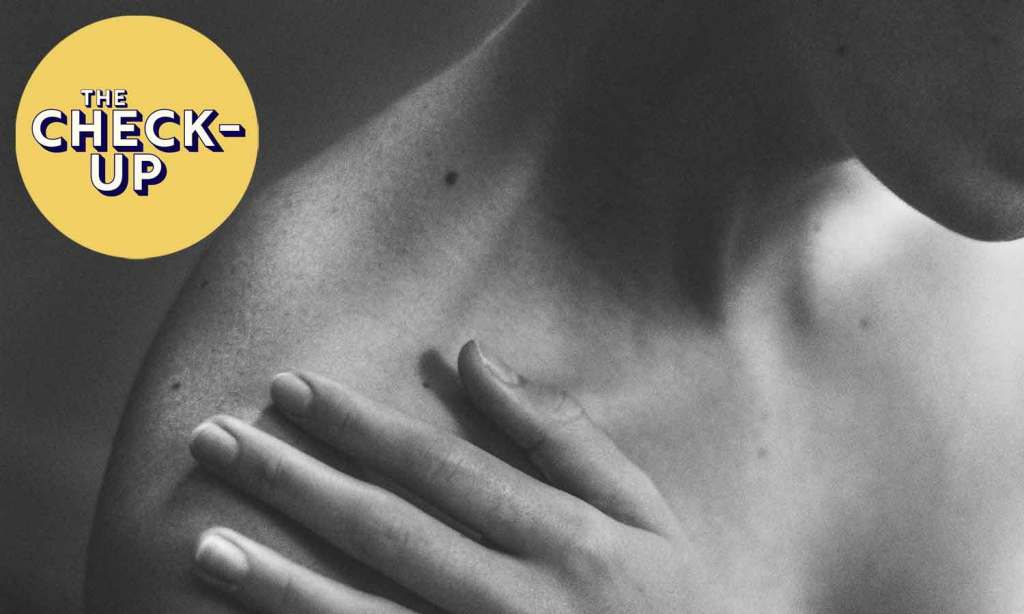During a recent survey of The Latch’s audience, we discovered that 37% have never had a skin check before and 27% haven’t had one in a few years. While scary, these figures aren’t surprising given that Australia has one of the highest rates of skin cancer in the world. Despite the prevalence of skin cancer amongst Australians, many of these cases are entirely preventable and, when detected and treated early, 90% of cases can usually be cured.
With this in mind, The Latch has created The Check-Up — a content series that will educate you on all things sun safety as well as the seriousness of skin cancer and specifically, melanoma. Check back each week for helpful and informative content on everything you need to know about this important topic.
There’s no doubt that the Australian sun is fierce. From winter to summer, the ultraviolet (UV) radiation from the sun’s rays beats down on us, with Australians particularly at risk of overexposure thanks to the thinning of the ozone layer in this side of the world.
With this in mind, it’s important to pay attention to how the sun is affecting your skin. According to government body Cancer Australia, melanoma of the skin (caused by UV radiation) is estimated to be the third most commonly diagnosed cancer of 2020, with roughly 16,221 people estimated to be diagnosed.
To say that sun safety is important for Australians would be an understatement. One way to stay on top of your skin health is through regular professional skin checks. While self-checking is an extremely important exercise to practice regularly, doctors are able to employ tools and techniques to examine skin beyond what the naked eye can see.
When it comes to these professional checks, it can be a little confusing as to where these are carried out. Dr Annika Smith, a dermatologist with a special interest in medical dermatology and skin cancer diagnostics, management and prevention, who also works with Melanoma Institute Australia, recommends starting with a visit to your GP.
“I think a good starting place is the general practitioner, who’s generally well-placed to perform a full skin check or refer on to a dermatologist if there are concerns,” Dr Smith told The Latch.
“There are skin cancer clinics, whereby doctors who typically have a general practice background also perform full skin checks and skin cancer surgery.”
Dr Smith advised that dermatologists are specialists in all things to do with the skin which is why a GP might refer you to one.
“Australian dermatologists, in particular, are well-versed in skin cancer medicine. And I think for anyone who is high risk or in which a second opinion is required, or with whom the GP requires assistance with that specialist dermatology input is warranted.”
High-risk individuals are those with a personal or family history of melanoma, are fair-skinned, have a high mole count, and a large number of atypical moles. Those who have sun exposure history, prior solarium use or who experience immunosuppression (be it due to medication or otherwise) are also considered high-risk.
General Practitioner (GP)
A GP can perform a skin check and look at any lesions or moles which may be causing you concern. If you see your dedicated doctor, they should be familiar with your history, including that of your family and as such, will be able to refer you to see a dermatologist if needed.
Most GP’s bulk-bill so the appointment shouldn’t cost you anything. Although some doctors do charge a fee, you should know whether this is the case or not if you go to see your regular doctor.
Skin Cancer Clinics
There are a bunch of dedicated skin cancer clinics across Australia where you can get your skin checked, with a number of clinics offering bulk billing. These clinics are generally staffed by doctors who typically have a general practice background.
Dermatologist
As Dr Smith said, a dermatologist is great for a second opinion, or preferable for those who may be at high risk of melanoma. Dermatologists are required to complete additional training in order to diagnose and treat skin diseases, including melanoma.
In order to make an appointment with a dermatologist, you’ll need to get a referral from your GP and you’ll probably have to pay a little out of pocket to see a derm. But, especially for those with serious skin concerns, it’s undoubtedly worthwhile especially considering how serious melanoma is.
Skin Check Champions will be encouraging Australians to “Strip Off for Skin Cancer” during National Skin Cancer Action Week (Nov 21-27). For more information, click here and to get involved, click here, book a skin check via the local clinic finder and post some photos and videos on your socials showing a little skin.
Read more stories from The Latch and follow us on Facebook.

